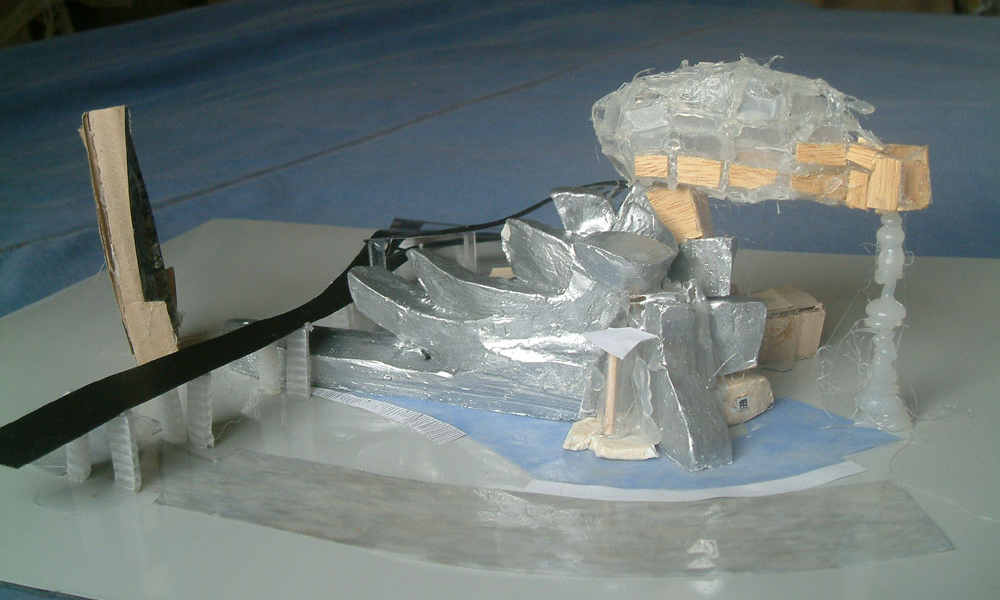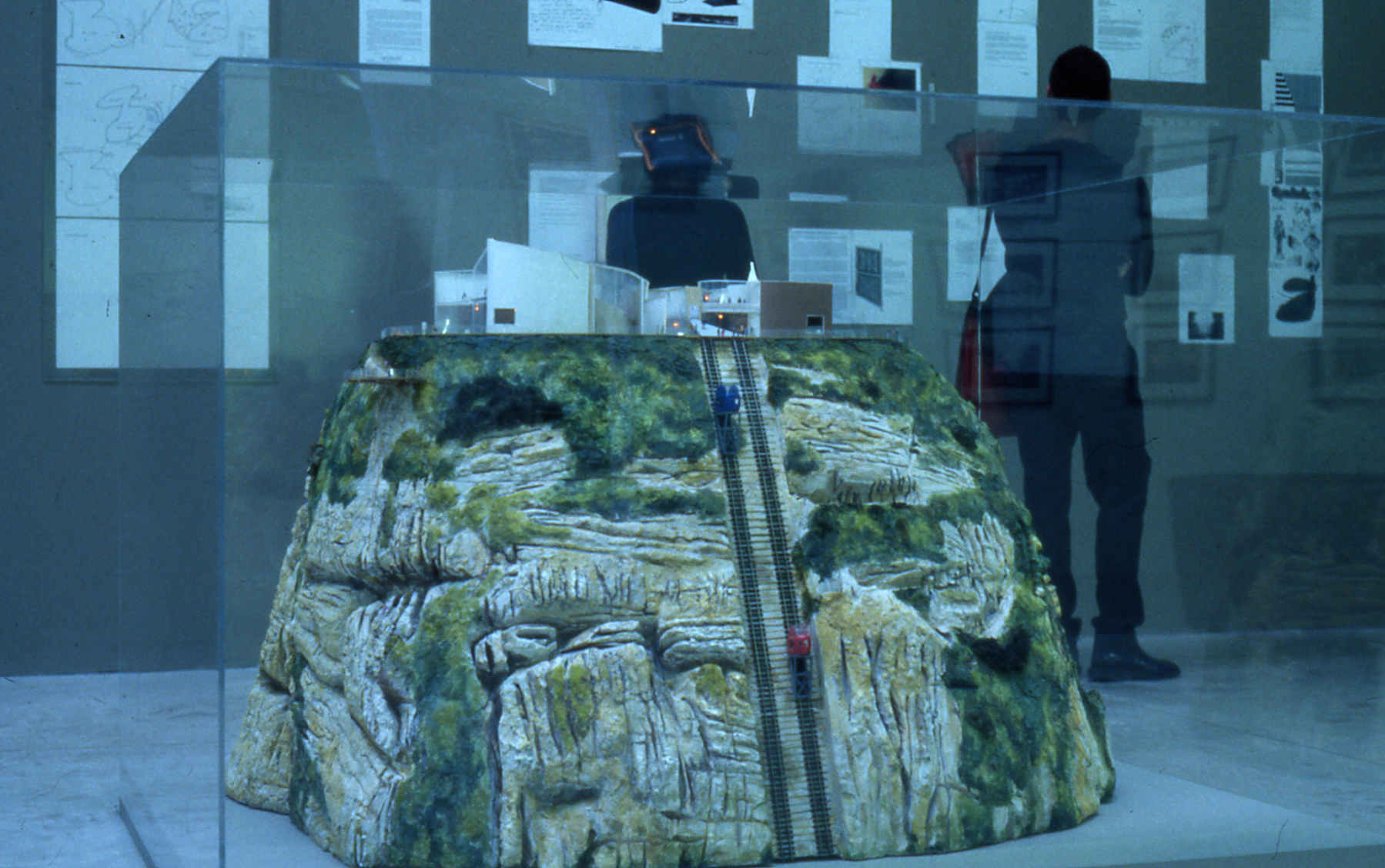The Sally Barker Gallery was a way of seizing control over the exhibition of my work by creating a space to show that I was totally in control of. Through it I continue to look at issues of power, ego and identity.
The Gallery is based on my signature and houses my retrospective of all my artworks, made on a scale of 1:100. It is a monument to the ego that comes with the territory, though this is offset by the fact that the work is virtually impossible to see on a model so small.
The Sally Barker Gallery has a project space where I show other artists’ work. I solicit proposals which are shown on the walls alongside the gallery, allowing the piece to grow with the response of others. Here is the opportunity of proposing a fictional show which can never be truly realised, itself a liberating experience. It also means that I get to play the role of director & curator and massage my ego further.
There is a free membership scheme to join the SBG and I am about to launch membership for The Sally Barker Empire. For details of how to become a member of The SBG or The Empire write to sally@sallybarker.org
Sally Barker, 2001
It was originally part of the “Century City” show at Tate Modern in 2001, and then moved to the 291 Gallery in Hackney for two years.
“London art of the 1990s straddles both a monumental and a tiny scale. As many key artworks have been made in bedrooms and kitchens as in expensive studios. Sally Barker’s Sally Barker Gallery (2000) demonstrates the use of fantasy as a means of taking control of one’s career. Barker has been working dilligently in London as an artist for the past decade, but has yet to achieve celebrity. Her eponymous ‘gallery’ is a small cardboard and polystyrene model, in which are displayed miniature versions of her oeuvre. Barker also solicits proposals from other artists for shows within the project spaces of her museum. Onve again a feminist reading is tempting: as a mother, Barker has fewer options than many for self-promotion, networking or curating than others – her gallery provides a home-based mirage of power and agency within the art world.”
The production of the gallery can be seen as a direct continuation of my work, which deals with the powerlessness of the artist in the face of the rise of the “art celebrity.” The London art scene is awash with tabloid art stars and faces familiar to readers of Hello magazine, and the making of shows has taken on a Hollywood feel, where the director is curator and the success or failure of the show hangs on which big names can be signed for the leading roles. My work first explicitly explored these ideas in comics, where Teela, a galactic superhero, represents an all-powerful force capable of catapulting the anti-hero artist, Dierdre, to fame and fortune. Later comics such as “Dierdre’s Daft Dilemma”; and “Miffy Steals the Show” explore the relationship between the artist and gallerist, with the artist inevitably coming out on the bottom. In this context, The Sally Barker Gallery can be seen as an exercise in artistic empowerment, and the emancipation of the artist from the shackles of art world big business. Here the artist takes control of her own destiny and produces a space in which she is also the gallerist and curator, thereby neatly sidestepping the current powerbase.


